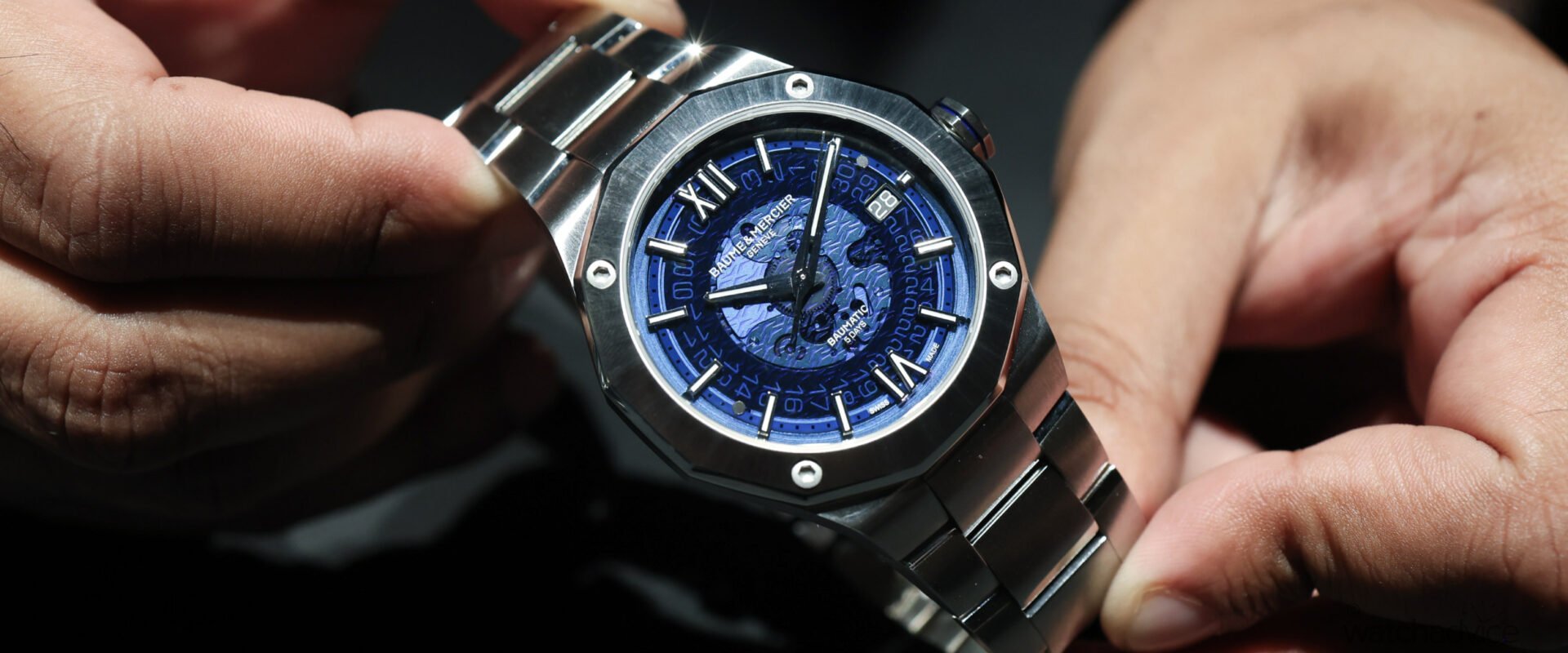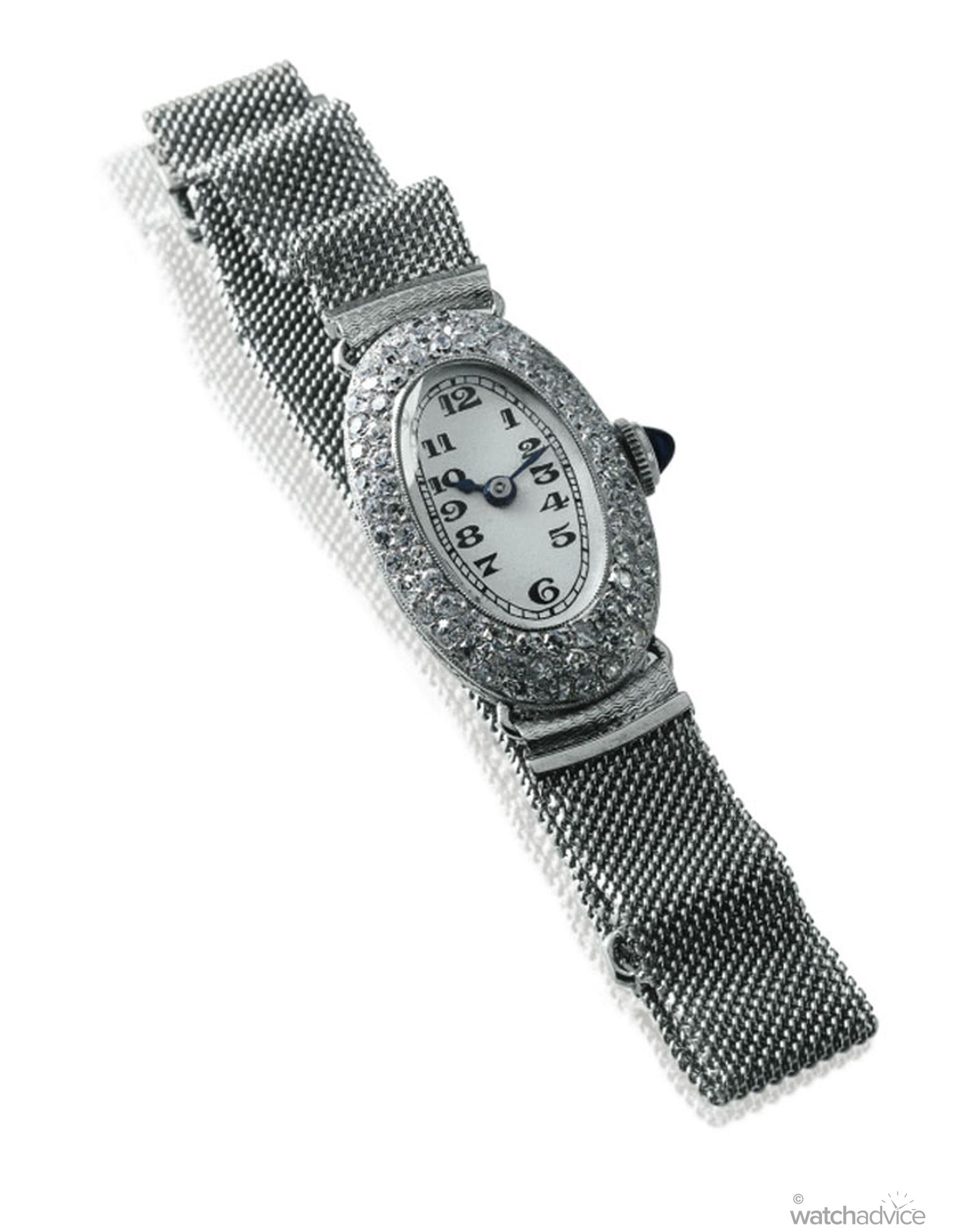Baume & Mercier is a surprise packet of a brand, and we’ve taken a deep dive into its roots, going back to 1830!
This article was written in partnership with Baume & Mercier
Baume & Mercier is one of the oldest watch brands in the world today, dating back to 1830. Only a handful of brands, like Breguet, Blancpain, Vacheron Constantin, Favre-Leuba and Girard-Perregaux are older, yet Baume & Mercier doesn’t quite get the same level of attention as the others, and more often than not, people aren’t aware of its historical roots and watchmaking firsts across the now almost 200-year history. So for this article, we’ve partnered with Baume & Mercier to shine a spotlight on the brand, its achievements, and iconic watches across the years.
The Origin Story
Baume & Mercier’s journey started way back in 1830 when two brothers, Louis-Victor and Célestin Baume decided to open up a watch dealership in Les Bois, a village in the Swiss Jura – the mountains that act in part as the border between Switzerland and France. Back then, the Swiss watch industry was still very much a cottage industry, operating in the winter months when outside work like farming and labour wasn’t possible due to the harsh and cold winters. Hence the word cottage, as this is where people set up their workshops, in their cottages.
Concentrating their efforts on high-quality pocket watches (the first wristwatch wouldn’t be born for another 74 years), the two brothers quickly built a reputation for themselves and their workshop for producing outstanding pieces, something the brothers lived by with their motto: “accept only perfection, only manufacture watches of the highest quality”. Through this motto, the brothers developed high-complication pieces, the likes of chronographs, minute repeaters and toubillons. Through the Baume Brothers’ attention to detail and craftsmanship, these pieces notched them up to 10 Grand Prix awards and seven gold medals at international exhibitions and shows in Paris, Melbourne, Zurich, Amsterdam, London, and Chicago. It’s not a bad haul for two brothers from the Jura region.

To help Baume’s expansion, Célestin Baume re-located to London in 1847 to help in becoming a more independent brand, breaking away from their distributors. He would eventually set up Baume Brothers four years later in a small area called Clerkenwell, which now forms part of the Islington borough of London (Remember Angel Islington in Monopoly?). This helped the business grow in the UK and assisted in their expansion efforts outside of Switzerland.
Towards the end of the 1800’s, the brothers now with more credentials and credibility in watchmaking, and having earned a great reputation, decided to enter a chronometry competition, The Kew Watch Trials held by the Kew Observatory – one of the most prestigious awards at the time as it set out a standard of trials across three different classes – A, B & C, A being the most coveted, to show the accuracy of a pocket watch. Baume entered this several times before it eventually walked away with the top rating of 91.9 marks in the Class A category. Their entry was a going barrel and Tourbillon-mounted chronometer with a detent escapement with a single overcoil balance spring. Technically impressive and a result that was not exceeded until ten years later, when in 1902, A.Golay, exceeded Baume’s marks by just 0.8 with a 92.7/100.

Becoming Baume & Mercier
As with all companies over time, the business environment and economy changes, and as such, businesses need to adapt as well. Sometimes this means bringing in new blood to help invigorate the business and take it into the next phase. By 1918, Baume was now 88 years old and was being run by Louis-Victor’s grandson, William. Pocket watches were now becoming less prominent, and the wristwatch was on the rise, having been invented so to speak just 14 years earlier.
In 1918, William Baume who was running the business, now known as Baume & Co. cut ties with the family business, and in doing so, set up his own business based out of Geneva. Baume & Co was still registered in London and continued to trade under this name for many years to come, importing watches from the factory in La Chaux-de-Fonds until it was bought out and wound up in the mid 1960s. This is another story, however, and if you want to read more about this, David Boettcher has done a detailed historical piece on the family and company over at his site – vintagewatchstraps.com

It was in 1918 that William Baume decided to join forces with Paul Mercier, another watchmaker, and jeweler he had met 6 years earlier, and in March of 1919, the company of Baume et Mercier was registered and officially became the brand we know today – Baume et Mercier. The new-found brand was located in Geneva, Switzerland, and its headquarters was set up there. That same year, Baume & Mercier received the Poinçon de Genève (Geneva Seal) for its watchmaking and designs. This is the same hallmark that is reserved today for high-end watchmakers, such as Patek Philippe and Vacheron Constantin thanks to their craftsmanship, aesthetics, and reliability. This would have been high praise at the time (and still is today), which helped Baume & Mercier to cement their name in Swiss watchmaking and continue the momentum from the original business and William’s Grandfather and Great Uncle’s legacy.
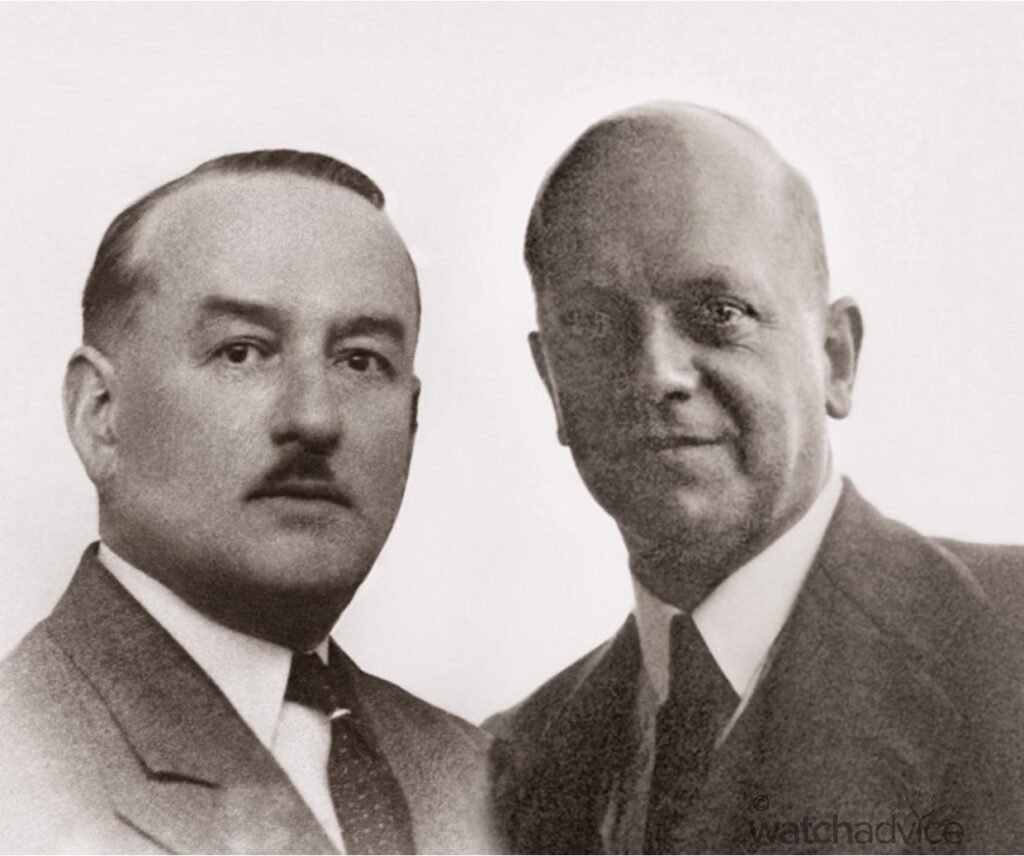
The Foundations Of The Brand
Post William Baume and Paul Mercier teaming up, the brand went from strength to strength. The 1920s gave rise to the Art Deco period, with many watch brands opting to adopt this style in their watch-making, which you can see when you look through archival pieces of many Swiss brands today. Baume & Mercier, perhaps due to the influence of Paul Mercier and his background as a jeweler, put a focus on ladies’ watches. Baume & Mercier found success with several pieces thanks to this combination of technical watchmaking expertise and design and aesthetics from the jewelry world. Collections such as their Baignoire-styled (Bathtub shaped) pieces, like the one below with the Art Deco numbers, a jewel set bezel, and a cabochon crown.
The company continued to make strides into the 1940s and 1950s, during which, Baume & Mercier brought out one of their most successful models to date, The Marquise in the late ’40s. A rectangular-shaped watch, sitting within a bangle-style bracelet, the Marquise gave off Cartier vibes, and even today, these look like a piece that you could very well see the brand bringing back out as a vintage revival piece.

Baume & Mercier started to hit it’s stride and make a real mark on the watch world in the 1950s and 1960s. Several key events happened. The first being the Phi logo, which is still found on Baue & Mercier watches today. Phi is the 21st letter of the Greek alphabet, but more representatively, used in mathematics to represent the Golden Ratio – something that many artists and designers take into account, or use as inspiration in their work. Baume & Mercier chose this as their logo as it represented equilibrium and a design ethos that would be used in their watch aesthetics. Many of these pieces produced at this time were the predecessors to the likes of the Clifton, Classima, and Capeland collections we have today.
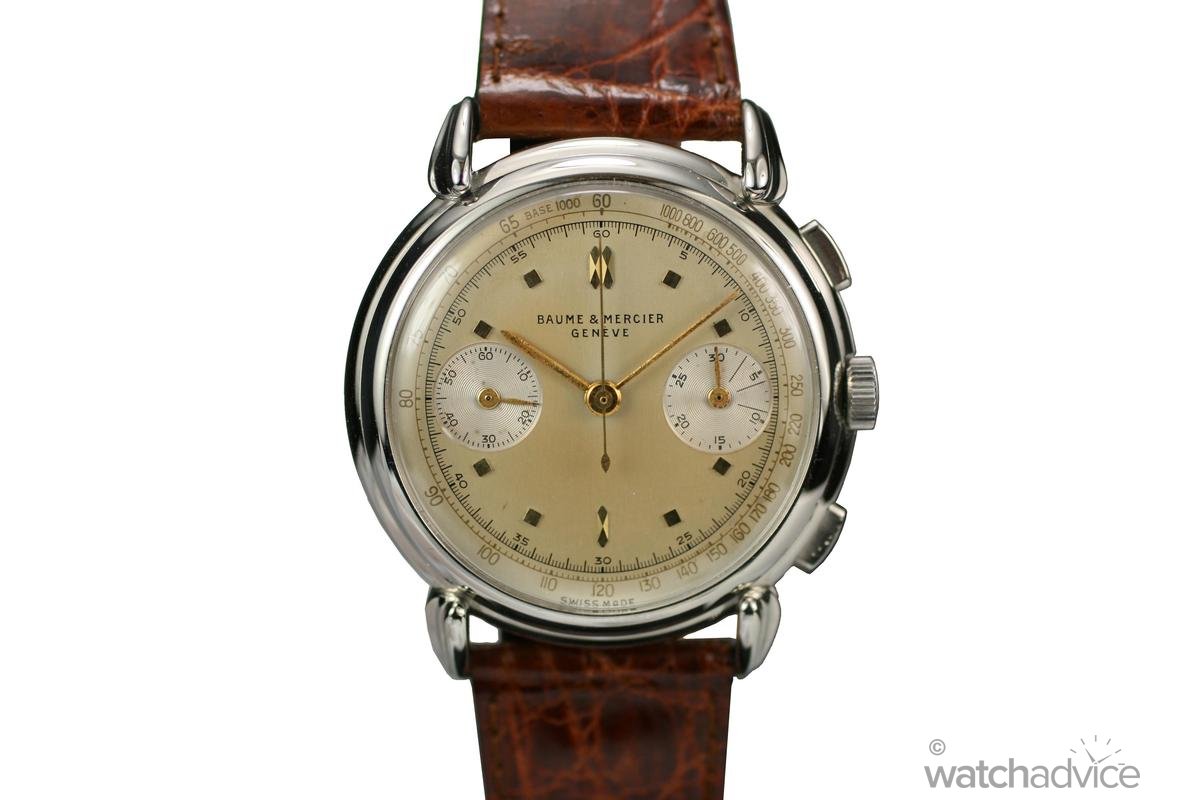
The other major event was one that would eventually lead Baume & Mercier to where it is today, and that was the acquisition of it by Piaget in 1964. This made sense as in the ’60s, many of Baume & Mercier’s movements were made by Piaget, and with the Baume & Mercier brand under its umbrella, could create efficiencies across the brands. This acquisition eventually led Baume & Mercier to be part of the Cartier umbrella in 1988 when the French Maison purchased a controlling interest in Piaget and Baume & Mercier. This would inevitably become The Vendôme Group 5 years later in 1993, which again would be bought and absorbed into the Richemont Group in 1998.
The Riviera
The 1970s was a turning point in a way for the Swiss watch world. In 1972 the now-famous Gerald Genta turned the watch world on its head with the inception of the Audemars Piguet Royal Oak. This would re-define the world of steel sports watches, and create the benchmark for integrated steel bracelets – something that Genta himself would reimagine again in 1976 with the Patek Philippe Nautilus and again the same year with the IWC Ingenieur. However, prior to the Nautilus and Ingenieur, Baume & Mercier would launch the Riviera in 1973.
The Riviera was a fashionable sport-chic looking watch, designed by watch stylist Jean-Claude Gueit. Whilst people may not know who Jean-Claude is and how this links in with AP, Jean-Claude Gueit was the father of Emmanuel Gueit, the man who designed the Royal Oak Offshore, so the Riviera has some design provenance in this era of integrated sports pieces.

The Riviera From 1973.
You can see the design codes of the original Riviera here – the dodecagonal (12-sided) case, integrated steel bracelet with vertical brushing, and slimline design. These cues all flow through into the modern Riviera today.
Image courtesy of Time And Watches
The Riviera became one of Baume & Mercier’s most emblematic pieces, which celebrated its 50th Anniversary last year. While other brands were focusing more on precious metals for their dressier sports watches, like you would come to see with pieces like the Piaget Polo in the late ’70s, Baume & Mercier concentrated their efforts on making elegant pieces using stainless steel. While the watch has evolved over the last 5 decades, the design cues and DNA of the watch have stayed more or less true to the original, the one that was said to evoke the spirit of the Riviera itself.
RELATED READING: Baume & Mercier Launch The Riviera Azure
Last year, 2023, marked the 50th Anniversary of the Riviera, and in a return to form, Baume & Mercier went back to their historical roots with the launch of the Riviera 39mm collection for a more traditional sizing, and a first for the modern era of the Riviera. This was followed up with the Riviera Azur, which took the essence of the Riviera Diver from 1981 and gave it a modern twist.
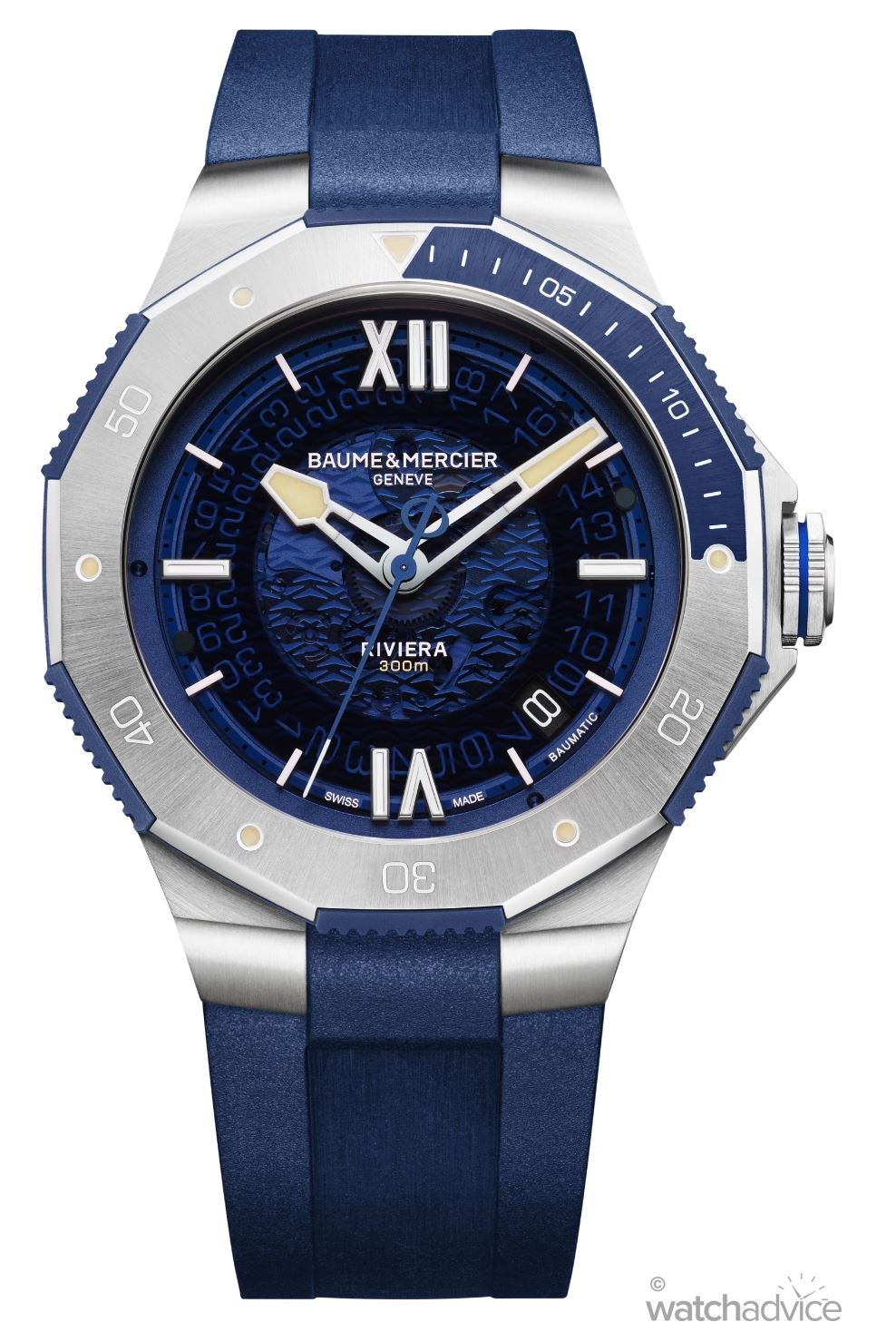
Building Towards The Future
In 2017, Baume & Mercier launched their first in-house movement, the BM12-1975M. A manual winding movement, developed with Richemont’s “in-house” manufacture – Manufacture Horlogerie Valfleurier, which the parent company uses for many movements that are part of the suite of brands under its umbrella. The movement features a TwinSpir hairspring made of silicon – a first for the Richemont group. The movement has a higher level of accuracy due to the hairspring working together with its variable-inertia balance wheel which enhances the accuracy for every day. Beating at 4Hz with a 90-hour power reserve, this movement was first implemented in the 2017 Clifton 1830 and marked a step forward for the brand, which up until then was considered more a watch design brand focusing on the designs and aesthetics rather than movements.
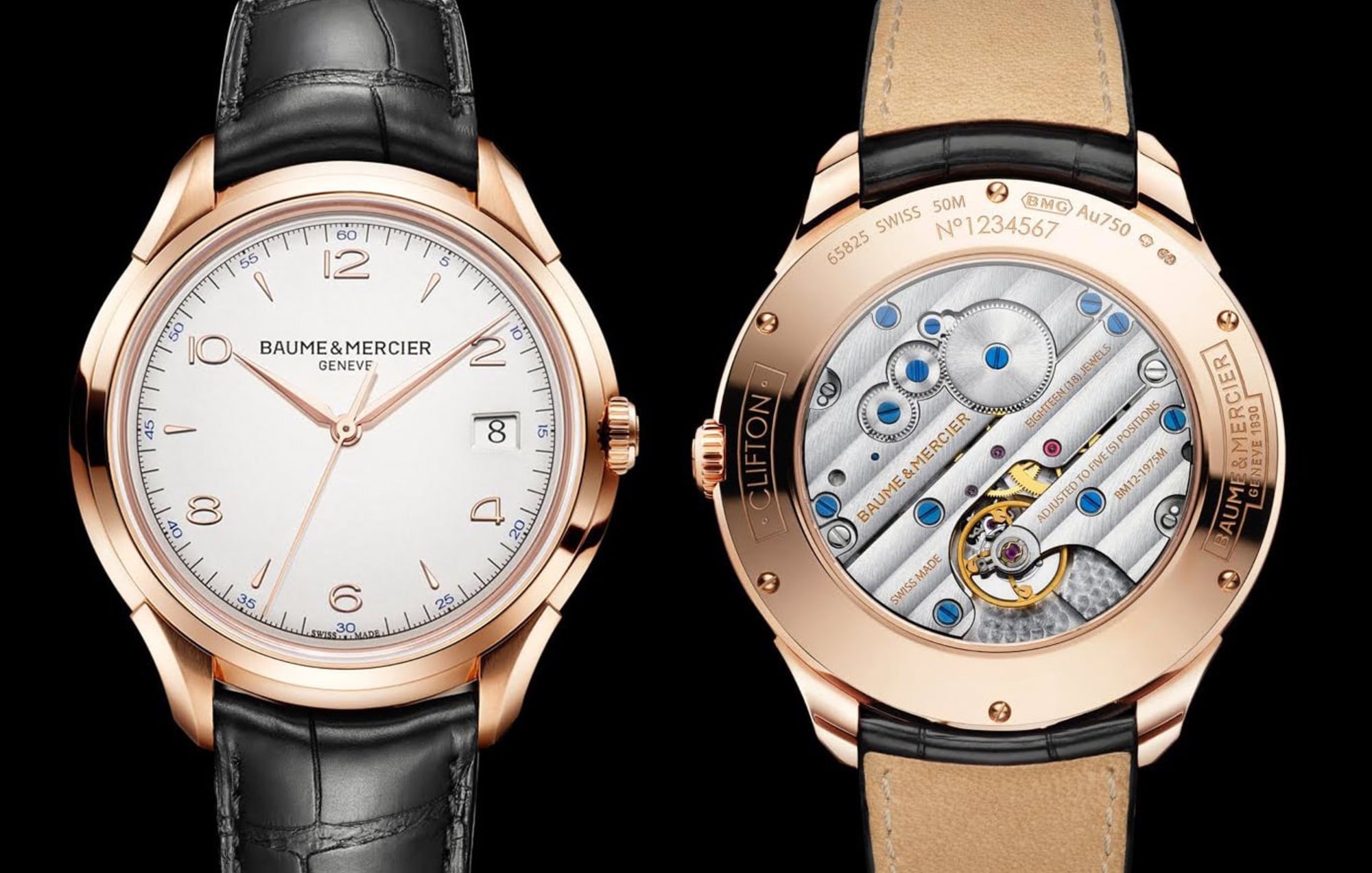
The following year, Baume & Mercier built upon this movement by introducing the Baumatic version, with an automatic winding system rather than the prior manual wind. This movement was also fitted to a Clifton, signifying the brand’s move towards the more refined segment of its market, albeit still reasonably priced, which today in steel, time only, and 40mm retails for around A$5,250.
Over the last 7 years, this movement has been extended out across several Clifton and Riviera models, enhancing the offering from Baume & Mercier for those who wish to get a watch at a competitive price point and a reliable movement. It is also a sign that the company that once took out the Kew Watch Trials as the most accurate and robust watch for 10 years is looking back at its pioneering history and groundbreaking movements as a little inspiration for the next chapter.
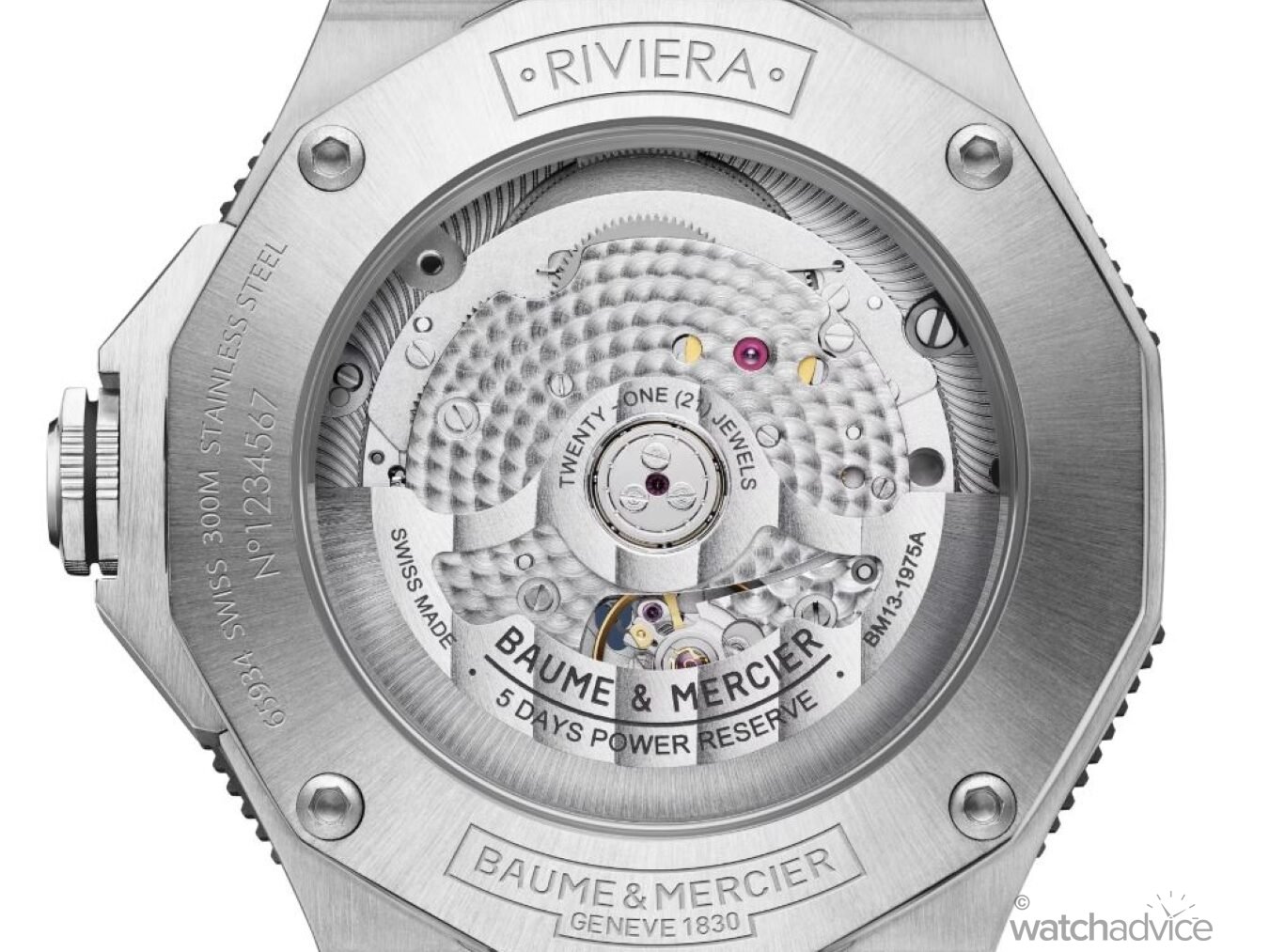
Here at Watch Advice, we’ve had the opportunity to go hands-on with several pieces at length, most recently the Riviera GMT Travel Time and currently, several others we’ll be talking about very shortly. In reference to the aforementioned GMT Travel Time, we found that it was a solid watch and delivers value for money at the A$5,000 price point. While I won’t give away all the details (you will just have to read the full article for that), my thoughts on it was a good daily wearer, comfortable and while I had it on for a couple of weeks, had several people comment on it and how nice it looked, from both the general public as well as at a couple of watch events with collectors. To me, when this happens, it’s a good sign that the watch has a little je ne sais quoi – a quality that you can’t quite put your finger on. This piece in particular doesn’t have the new Baumatic Movement in it due to the GMT function, but I would say that this would not be far away from the brand developing it. A solid watch nonetheless.

Baume & Mercier is a brand that has a rich history going back almost 200 years and while not all was smooth sailing, the essence of the Baume family that started it all the way back in 1830 still remains. Being owned by Richemont means that it has it has a place set in the suite of brands that calls Richemont home, as such, it may never get back to those days when they set the standard for all others to follow. However, when you look at the range of pieces and price points Baume & Mercier offers, it is clear that there is a piece for all collector levels. From the entry-level quartz pieces in their Clifton Club range to the everyday sports watches in the Riviera collection, through to the Clifton 10583 Perpetual Calendar in Rose Gold housing the in-house BM13-1975AC2 Automatic winding movement complete with 120 hours of power reserve.
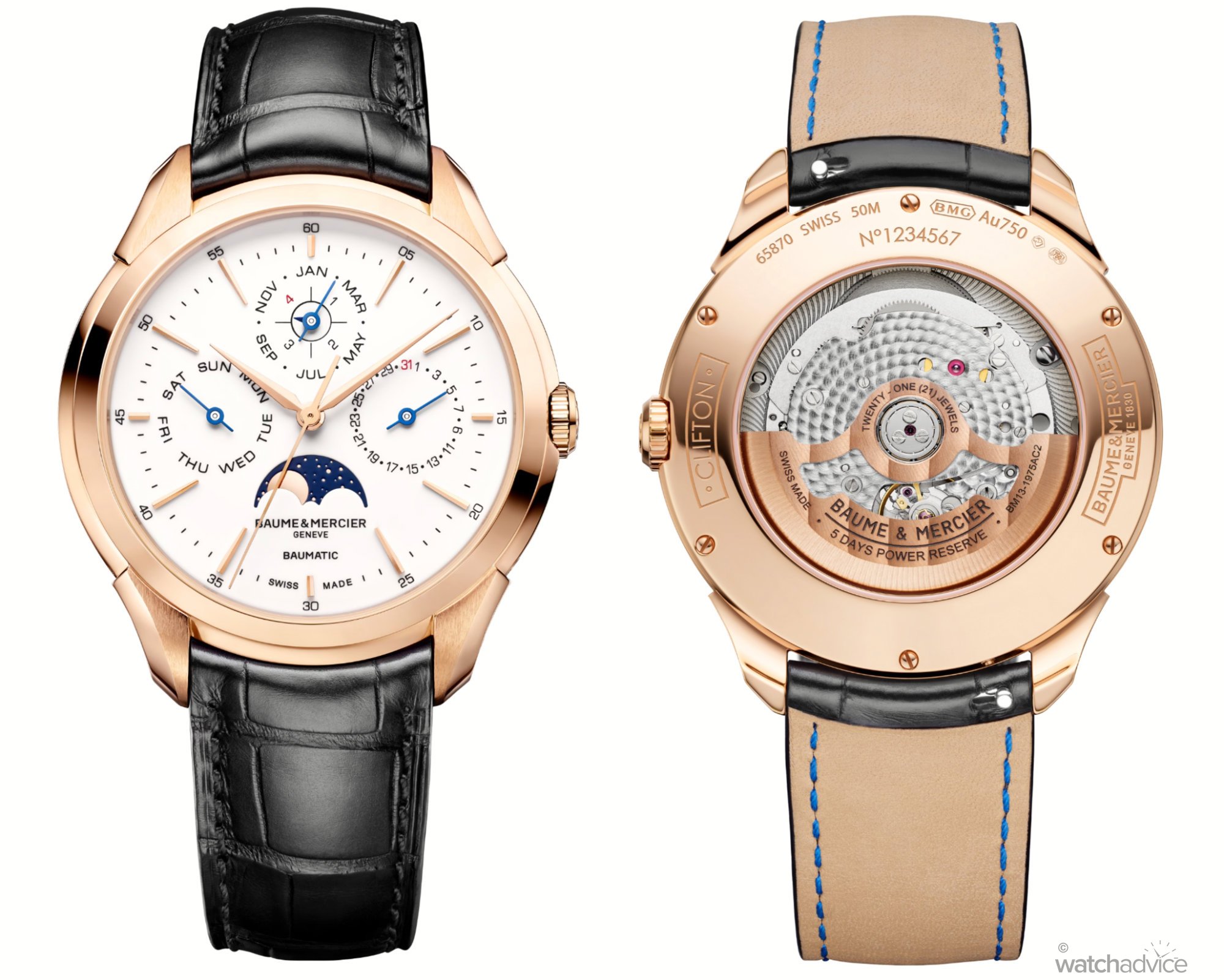
Personally I’d love to see more in-house movements, a little more Avant Garde designs as well as pushing the boundaries with their pieces and what they bring to market. Pieces like the Riviera Squellete, the Acier Titane, or the Riviera Perpetual Calendar (pictured in the second image below).
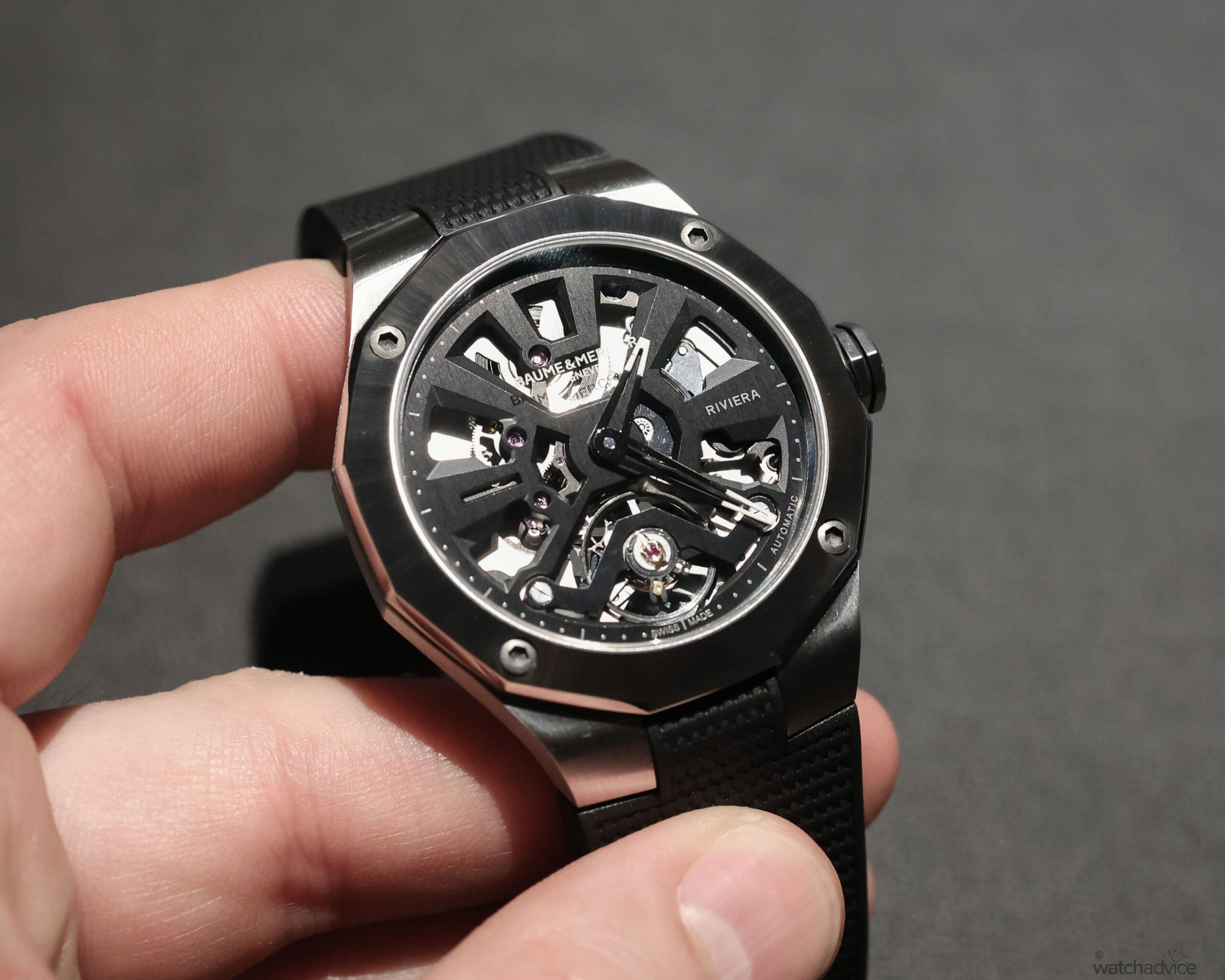

For now, Baume & Mercier sits comfortably in the mid-level luxury market and offers watch lovers something a little different to the norm. For those who appreciate the pioneering roots, the Avant Garde ethos mixed with classic design cues as can be seen in the Hamptons collection, reminiscent of the Art-Deco days of the 30s and 40s, Baume & Mercier is worth discovering.

This article was written as part of a commercial partnership with Baume & Mercier. Watch Advice has commercial partners that work with us, however, we will never alter our editorial opinion on these pieces, a fact that is clearly communicated to the brands when entering into a commercial arrangement.


